Results 1 to 9 of 9
-
03-21-2011, 03:28 PM #1
 Razor's grinds, re-grinds and new grinds.
Razor's grinds, re-grinds and new grinds.
Gents,
I'm a bit confused, and haven't been able to find a clear answer to this.
I know some razors are reground, and I imagine at the time that was an improvement to the blade. Now, I've seen comments like "obviously that's a regrind" or "you can clearly see that's been reground", but for the life of me I can't tell or figure out what's the tell tale sign that makes it so obvious. I imagine knowing more about razors and their provenance would help see a grind out of style or period, but I suspect is something else.
Sometimes it seems the terms re-grind and new grind are used interchangeably... is this so?
Apologies in advance for the pedestrian questions.
-
03-21-2011, 03:37 PM #2

My input is this.... When more hollow ground razors were in vogue, many near wedge and wedge grinds were "improved" by subsequent owners by the regrind process or perhaps due to some type of damage this was done as well. I do not think they were an improvement at all IMO. As my ex wife would always say, "It is what it is".... Give me the original thick spine wedges anyday!
Mike
-
03-21-2011, 04:34 PM #3Senior Member

- Join Date
- Jun 2010
- Posts
- 279
Thanked: 70
Here is a reply I made to a similar thread.
When you know a razor was not produced after a certain date, say 1830, but a thin, hollow ground, large jimp blade shows up with double shoulders, it's reground.
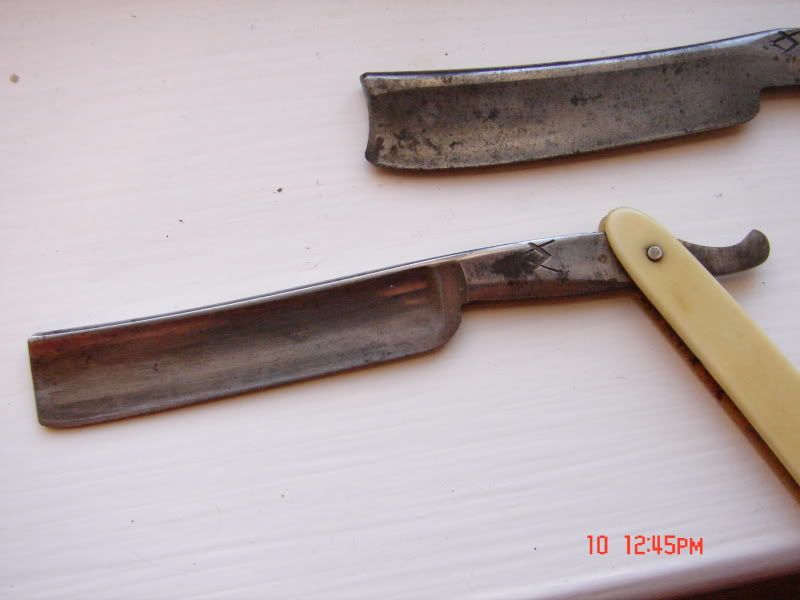
The new blade shape fits completely into the old.
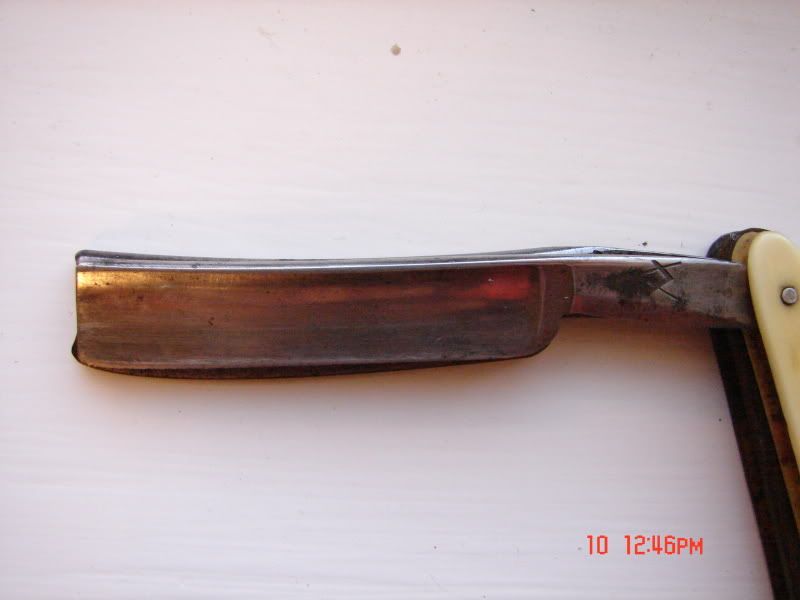
Hollow grind vs. wedge. You can see the original wedge has plenty of steel to allow the spine to shrink.
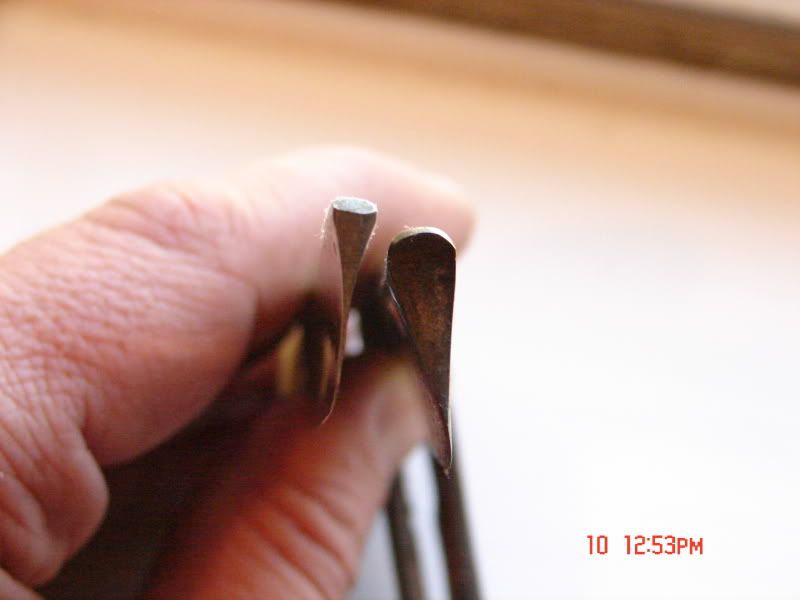
Identical logos. The regrind probably had John Barber written across the edge of the spine.
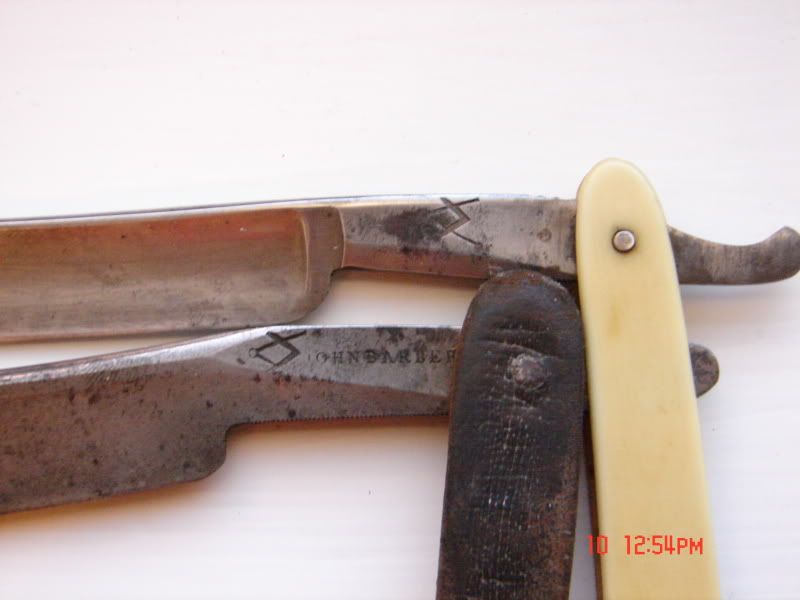
Hopefully, you can see how much steel was lost along the length of the razor. It really is thinner.
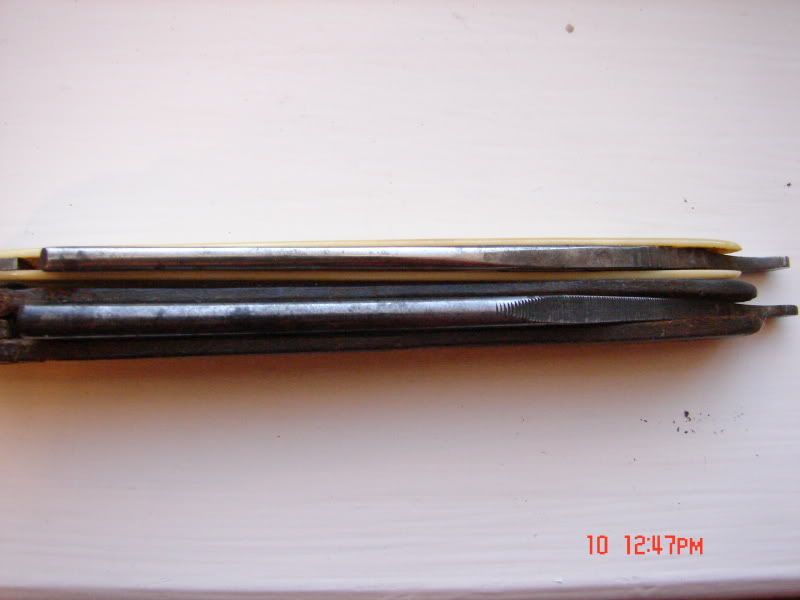
Useful? I doubt it, but I wanted to post it anyway. Maybe it'll help someone.
-
The Following 3 Users Say Thank You to pz93c For This Useful Post:
AntiqueHoosier (03-21-2011), Snake (03-21-2011), str8fencer (03-21-2011)
-
03-21-2011, 05:05 PM #4

PZ - while your comparison is very cool and you make a lot of good points, there is no way to know if those two razors started out life identically sized and shaped. They very possibly didn't. For example, based on the different tang widths and given that both still have very clear tang stamps, I believe that they are both their original width across the spines, or at least very close to it. I don't think regrinds typically reduce the spine width by a noticeable amount. The length of the ivory one also looks original, based on the distance between the end of the blade and the wedge. Again, I don't think regrinds typically shortened razors, unless there was a problem with the toe.
------------
There are a few different ways one can spot a regrind. One, as above, is if the hollowing of a blade is out of character for the era it was made. Full hollow stubtails are a great example.
Another is a sloppy or unusual shoulder left by more than one grind. Most razors with stabilizers have one of a few patterns, and they tend to be very clean. This is not always the case on a regrind.
Often, but not always, regrinds have stylized toes, similar to a W&B Bow. This must be taken into account with other factors, as razors like the Bow came this way from the factory AND not all reground blades are so stylized.
Old reground blades were most likely reground by razor manufacturers or other people who worked professionally with razors, and I have found that vintage regrinds tend to be exceptionally well done. I wouldn't consider them damaged razors, but I wouldn't consider them original either. They are more like vintage semi-customs.
While there is no way to prove this, I really do not think vintage razors were reground as a result of being damaged (though it is very likely that toes may have been altered and/or razors shortened due to damage). I believe the regrinding was mostly just to produce a hollower or full hollow razor. Those came into vogue because they are easier to maintain and were/are considered more refined razors.
Today, the word regrind seems to be applied more flexibly, and there is, IMO, a greater chance a regrind would be to correct damage than to hollow out a razor.
I think I have only seen the phrase new grind used to refer to razors which are produced from old blanks, such as the Livi new grinds.Last edited by holli4pirating; 03-21-2011 at 05:10 PM.
-
The Following 3 Users Say Thank You to holli4pirating For This Useful Post:
AntiqueHoosier (03-21-2011), HarryA (03-22-2011), Snake (03-21-2011)
-
03-21-2011, 10:00 PM #5

Thank you guys for the schooling. I'll have to be more observant, both of blades and context.
Speaking of context, and since it seems I had it all wrong and regrind and new grind are not the same thing, when I got my Mastro Livi someone mentioned that they had desired such a reground for a while. Based on what Holli states, this was inaccurate, right?
So, if I'm a good study, a regrind is work done to a blade to alter its profile (obviously from a heavier ground to a lighter one), and a new grind is an old blank that is ground to whatever profile... correct?
Again, thank you for sharing your knowledge.
-
03-21-2011, 10:45 PM #6
 No matter how many men you kill you can't kill your successor-Emperor Nero
No matter how many men you kill you can't kill your successor-Emperor Nero
-
03-22-2011, 12:11 AM #7

I'd say so. Original grind (old or new) is starting from a blank, re-grind is starting from something that used to be a razor. There could be all kinds of reasons for regrinding, from fixing functional or cosmetic damage, to just desiring something different.
A while back I read posts from Gary Alfonso saying that a lot of the old sheffield wedges were reground to hollows around the turn of the 20th century
because that's what was selling. In particular meaning that a fair amount of those 'Celebtated' W&B's didn't start with that grind, obviously the stamp on the blade was put after the regrind.
I think in most cases it's not too hard to tell whether the razor was reground, just by looking at the lines. You just have to know a little bit of what grinding produces. Take for example the john barber pictures above. The red line is a result of the original grind, the blue lines are from secondary grinding. Of course it's possible to make both things at the same time, but most of the time you still can tell because regrinds tend to look sloppier and not quite aesthetically pleasing as original grinds.
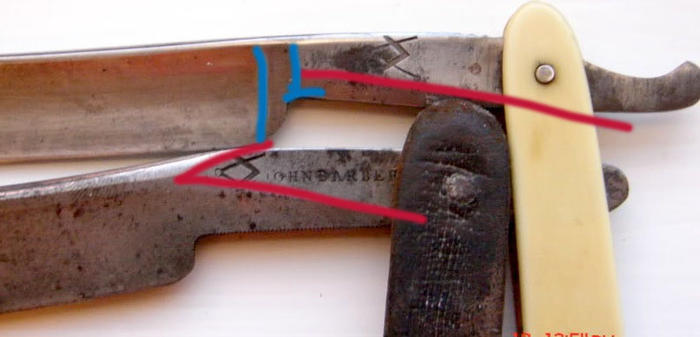
Last edited by gugi; 03-22-2011 at 12:15 AM.
-
03-22-2011, 01:46 PM #8

Are the livi new grinds just blanks he made a while ago and reground now?
Or are they like the le grelots meaning old company that went out of business and someone bought all their blades?Shaving_story on Instagram
-
03-22-2011, 07:59 PM #9

The Livi new grind blades were cast by another razor maker either just before or after WWII. I've never seen an exact date, and the name of the original maker, while in my memory somewhere, has gone fugitive at the moment.
The story as I recall it is that the original maker's grandson sold the blanks to Livi and they are then ground and finished.
I've seen varying numbers of how many blades were available. Perhaps some day there will be no more other than in the secondary market.
Lynn may know the whole story.
They are excellent razors, by the way.


 LinkBack URL
LinkBack URL About LinkBacks
About LinkBacks






 Reply With Quote
Reply With Quote



